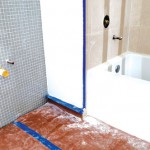Adding a bathroom to your home remains one of the most popular and rewarding home improvements you can make. In fact, when you sell your home, you can expect to recoup more than 50 percent of the cost of a bathroom addition. Creating a new bathroom where none currently exists can, however, be among the more challenging home improvements you can make.
Fortunately, with careful planning and the help of innovative plumbing fixtures, it is possible to add a bathroom to virtually any home. Here are some challenges and how you can address them:
Finding space
Where to put another bathroom is a burning question. Of course, the question is more challenging for smaller or older homes, but options do exist. Options might include taking some space away from a garage, or adding a bathroom beneath stairs.
Breaking through concrete
Adding a bathroom in a home that sits on a slab traditionally requires cutting into concrete. There are many pitfalls to consider with this traditional approach.
Cutting into a concrete pad is a costly endeavor and inevitably weakens its structural integrity. The process creates dust and noise, and the contractor can’t be sure what he will encounter. These challenges can be solved with above-floor plumbing.
Plumbing
Finding room for pipes can involve opening walls or cutting into concrete — traditional approaches that can be inconvenient and costly.
Macerating toilet systems, such as Saniflo’s Sanibest, can be an affordable, time-saving and convenient alternative. While you may be familiar with the concept of “upflushing” toilets that use a pump to move waste, macerating technology goes one better, incorporating a grinding feature that reduces solid waste before pumping out, which eliminates clogging. In addition to managing liquid and solid waste, this upflush technology easily accommodates waste water from a bathroom sink and a shower or bathtub in one
To learn more, visit www.saniflo.com.
Water supply
Before moving forward with their home improvement plans, homeowners should assess the capacity of their water heaters and the condition of existing plumbing within the home.
Finally, ask your plumber to inspect existing pipes in the home. Are they in good condition and will they withstand the added demands of a new bathroom?
This article is courtesy of Brandpoint.


